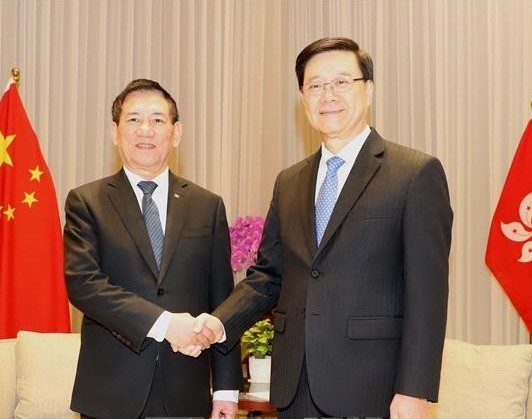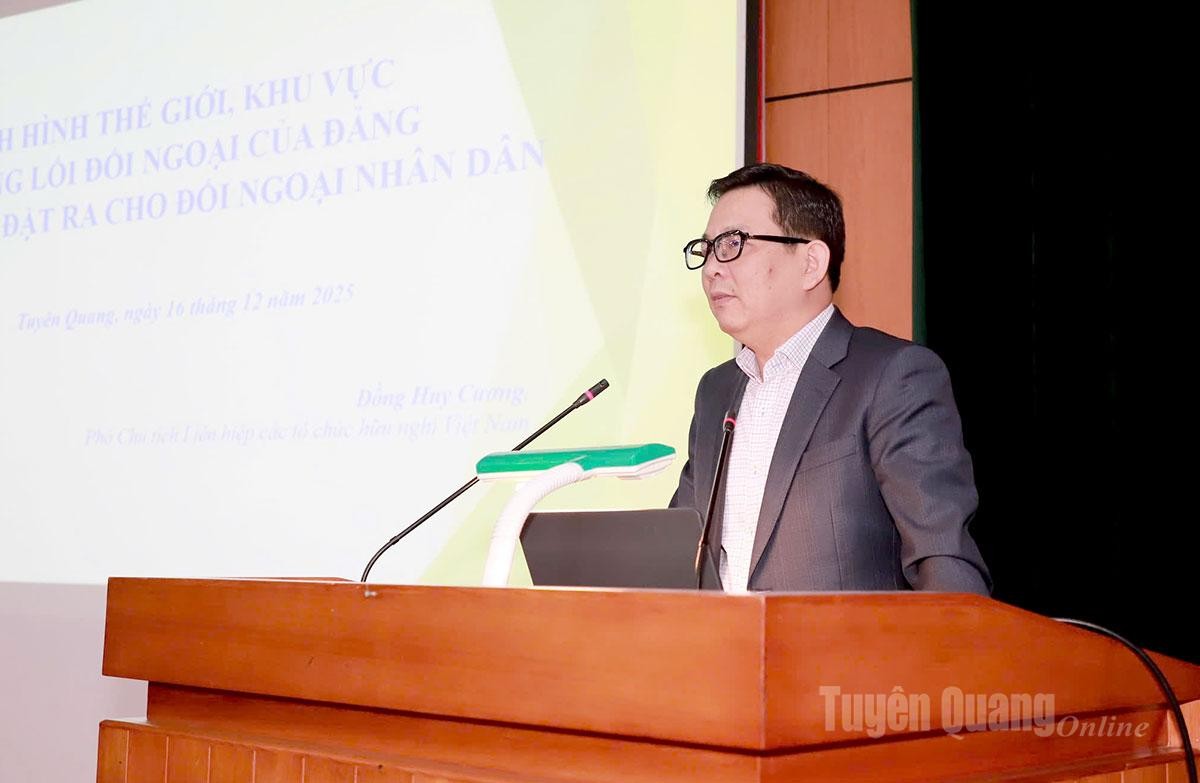Viet Nam-USA Society: 80 Years of Remarkable Journey
| Vietnam-US People-to-People Cooperation: Healing the Past, Inspiring the Future | |
| State President Meets with US President, World Leaders in RoK |
Historic encounter that launched Viet Nam-US Cooperation
At the end of 1944, when World War II entered its fiercest stage, the United States officially joined the war and sent its forces to fight alongside the Allied powers against the Japanese fascists in the Asia-Pacific region.
According to historical records, the origins of Viet Nam-US cooperation during this period stemmed from an incident in which an American pilot lieutenant was shot down by Japanese forces over the Viet Bac resistance base and rescued by Vietnamese revolutionaries. This encounter became a bridge leading to a meeting between President Ho Chi Minh and an American general representing the Allied forces in South China. Through this contact, President Ho Chi Minh helped the Americans gain a better understanding of the Viet Minh and the Vietnamese struggle for independence. The Americans also began to view the Viet Minh as an active anti-Japanese ally with whom they could collaborate.
Under the leadership of President Ho Chi Minh, the Viet Minh forces in the Viet Bac base area provided significant assistance to American forces in Indochina. The propaganda verse “The American army is our friend / Rescuing American pilots is the Viet Minh’s duty,” printed on an illustrated issue of Viet Nam Doc Lap (Independent Viet Nam) - the newspaper of the Cao-Bac-Lang Viet Minh Front founded and directed by President Ho Chi Minh, was widely circulated among the people. It helped establish the Viet Bac resistance zone as a safe rear base for American soldiers fighting against fascism.
From the rescue of one American pilot parachuting into Viet Nam, thanks to President Ho Chi Minh’s diplomatic art, a mutually beneficial cooperative relationship developed between the Viet Minh Front and US forces. The United States sent specialists from the Office of Strategic Services (OSS) to provide the Viet Minh with radio communication equipment, weapons, and technical guidance. The OSS dispatched a five-member team, codenamed the Deer Team and led by Major A. Thomas, who parachuted into Tan Trao (Tuyen Quang) on July 17, 1945, to help train Viet Minh guerrillas in fighting the Japanese.
In early August 1945, the Viet Nam-US joint military unit (Dai doi Viet-My) was established and, on August 20, 1945, participated in combat against Japanese troops in Thai Nguyen. The Viet Minh built the Lung Co airfield in Tuyen Quang to accommodate light aircraft from the US Air Force. The American soldiers in the Viet Nam-US joint military unit became the first foreigners to stand alongside the Government of the Democratic Republic of Viet Nam during the Declaration of Independence ceremony on September 2, 1945.
Major Archimedes Patti, Head of the OSS Indochina Division and Chief of the OSS advance mission to Hanoi for the Japanese disarmament (August 22 - September 30, 1945), was also the first foreigner to read the draft of the Declaration of Independence of the Democratic Republic of Viet Nam.
 |
| Ambassador Pham Quang Vinh, President of the Viet Nam-USA Society, delivers the opening speech at the 2024 year-end review and 2025 planning conference. (Photo: Dinh Hoa) |
Immediately after Viet Nam regained its independence, with his sharp political and diplomatic vision and sincere goodwill, President Ho Chi Minh recognized the necessity of establishing diplomatic relations with the US and of gaining the support of the progressive Americans for Viet Nam’s revolutionary cause.
Between 1945 and 1946, President Ho Chi Minh sent eight letters and cables to President Harry Truman and three to Secretary of State James Byrnes. In his letter to Byrnes dated November 1, 1945, President Ho Chi Minh proposed sending 50 young Vietnamese to the US “to promote further studies in technology, agriculture, and other specialized fields.” He wrote that the Vietnamese intelligentsia “earnestly wish to build ties with the American people, whose noble stance on the lofty ideals of justice and international humanity, as well as their modern technical achievements, have greatly inspired the intellectuals of Viet Nam.” However, none of these messages received a response from the United States - a missed opportunity often regarded as one of the most regrettable in early 20th-century Viet Nam-US relations.
Alongside his efforts to establish state-level diplomatic ties, President Ho Chi Minh also focused on building the foundation for people-to-people relations between Viet Nam and the United States. On October 17, 1945, only a month and a half after the Democratic Republic of Viet Nam was founded, under his guidance, the Viet Nam-America Friendship Association was established with the aim of contributing to the implementation of the young nation’s foreign policy. This was the very first bilateral friendship association in Viet Nam. At that time, its primary task was to help the fledgling Vietnamese state gain broad international recognition and “seek every legitimate way for Americans and Vietnamese to understand one another and foster mutual goodwill.” The Association had its own press organ, published a bilingual Vietnamese-English magazine, and produced radio programs introducing the country, people, and culture of Viet Nam to the American public.
The founding of the Viet Nam-America Friendship Association marked an important step in President Ho Chi Minh’s diplomatic thinking - one that emphasized the essential role of global popular support, including that of the American people, in the success of the Vietnamese revolution. The establishment and activities of the Association were part of Viet Nam’s diplomatic strategy toward the United States, based on the principle that “in diplomacy, we should continue to declare friendship with the US and use the Viet Nam-America Friendship Association as a partial instrument of international communication.” Through the Association’s activities, Viet Nam sought to send a clear message of goodwill and friendship toward the American side.
By the end of 1966, a special working group for mobilizing American public opinion had been formed. In 1967, the American Affairs Committee (Ban My van) was officially established, consisting of 40 staff members with its own budget and organizational structure. At that time, the unjust war waged by the US in Viet Nam was increasingly condemned by the American public, and the anti-war movement was growing rapidly across different segments of US society. To take advantage of this widespread public support, on July 12, 1968, the Government of Viet Nam established the Viet Nam Committee for Solidarity with the American People (commonly known as the Viet Nam-America Committee). The Committee’s purpose was to help the American public recognize that the war their government was conducting in Viet Nam was unjust, while the Vietnamese resistance against the US was just - a struggle for peace, national independence, and reunification. It also aimed to secure continued and determined support from the American and global public, serving the political needs of Viet Nam’s resistance against the US.
The activities of the Viet Nam-America Committee contributed to a powerful international movement across the US and beyond, calling on the US government to end the war in Viet Nam. The anti-war marches, letters, poems, and photographs of millions of peace-loving Americans became vivid testimonies to humanity rising above hatred - the first building blocks of the bridge of reconciliation between the two nations in the years that followed.
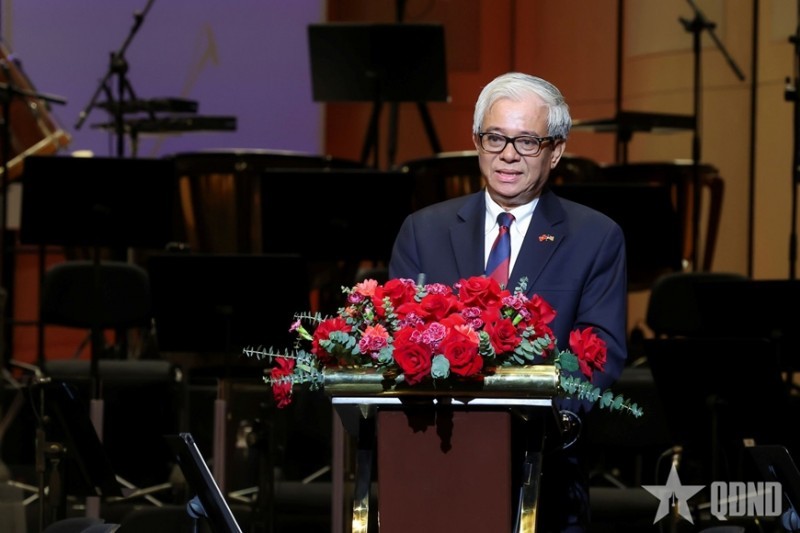 |
| Ambassador Pham Quang Vinh, President of the Viet Nam-USA Society. (Photo: People’s Army Newspaper) |
The Viet Nam-USA Society: Key Opening Door to Viet Nam-USA Diplomacy
According to many experts, in the late 1980s and early 1990s, amid a complex international context and the Viet Nam-US relationship still constrained by the legacy of past hostilities, it was precisely people-to-people diplomacy that served as the key to opening a “side door” that brought the two sides closer together. This diplomacy acted as a catalyst, triggering a chain reaction that gradually melted the nearly 20-year-long ice in bilateral relations following the end of the war.
In 1992, in line with the Party and State’s policy of renewal, diversification, and multilateralization of external relations, the Viet Nam-America Committee was transferred from the People’s International Department (of the Central Commission for External Relations) to the Viet Nam Committee for Peace, Solidarity and Friendship - now known as the Viet Nam Union of Friendship Organizations (VUFO), and was renamed the Viet Nam-USA Society.
The Society’s first activities at that time, much like those of the original Viet Nam-America Friendship Association, were to open English language classes for VUFO staff and members of the Society to improve their English proficiency, while also actively building a network of partners in the United States. The Society’s members served as true people’s diplomats, they initiated the earliest people-to-people exchanges between Viet Nam and the United States and actively contributed to the process of reconciliation and normalization of relations between the two countries.
These members included Vietnamese scientists, intellectuals, and doctors who, during their participation in international conferences, established friendly contacts and professional exchanges with American colleagues. The Society also organized the first repatriations of captured American pilots and welcomed their relatives to visit Viet Nam. Through such visits and personal encounters, many Americans came to understand and appreciate the Vietnamese people’s spirit of humanity and forgiveness. Hundreds, even thousands, of US veterans, freed from the tormenting nightmares of the war, expressed repentance and sought to help heal the lingering wounds of war from the millions of victims of Agent Orange/dioxin to those affected by unexploded ordnance scattered across Viet Nam, the land where they once fought. From this period onward, Viet Nam-US relations were replanted with seeds of trust and compassion.
Through people-to-people diplomacy, the message of reconciliation was communicated and acknowledged by the leaders of both nations. It was precisely the sustained efforts of people’s diplomacy, with the Viet Nam-USA Society at its core, that connected American individuals and organizations supporting normalization with Viet Nam, helping to pave the way for the official normalization of diplomatic relations between Viet Nam and the US on July 12, 1995.
Thus, after fifty years of historical ups and downs since the founding of the Democratic Republic of Viet Nam, the mutual recognition between Viet Nam and the US was finally realized in 1995, opening a new chapter in their relations. Building on the network of American partners developed over previous years, the Viet Nam-USA Society launched a variety of exchange programs between the peoples of both nations, beginning with veterans’ reconciliation exchanges, then expanding to senior citizens, politicians, ordinary citizens, teachers, professors, students, and businesspeople. Mutual visits and exchanges steadily grew in number and scope.
The first exchange programs between the two peoples were symbolic reconciliation activities for war veterans and the “Hostel for the Elderly” program, which welcomed American seniors to visit and learn about Viet Nam and its people. The Society also created numerous opportunities to foster mutual understanding and narrow gaps between the two nations through initiatives such as “Discovering America,” “Friendship Ambassadors Homestay,” and student exchange programs between high schools and universities of both countries.
Along with the strong development of state-to-state relations from the Comprehensive Partnership (2013) to the Comprehensive Strategic Partnership (2023), the activities of the Viet Nam-USA Society now face new requirements, calling for innovation in both content and form, as well as in its approach to partners and friends. Emphasizing mutually beneficial cooperation with American partners has become a new driving force for people-to-people diplomacy, ensuring the sustainable growth of bilateral relations and contributing to the overall partnership between the two governments.
With hundreds of partners, including NGOs, individuals, experts in various fields, scientists, and entrepreneurs across different US states, together with a large and active membership in Viet Nam eager for international engagement, the Society’s cooperation activities have gradually evolved. They have shifted from receiving humanitarian assistance, poverty alleviation, post-war recovery, support for Agent Orange/dioxin victims, and disaster relief, to cooperative development programs that promote positive engagement in trade, science and technology, tourism, culture, education, sports, interfaith dialogue, and broader people-to-people exchanges.
The Viet Nam-USA Society celebrates its 80th anniversary at a truly significant moment: Viet Nam and the US are also marking the 30th anniversary of the establishment of diplomatic relations and two years since the elevation of their ties to a Comprehensive Strategic Partnership for peace, cooperation, and sustainable development.
Looking back over eight decades, the Viet Nam-US relationship has overcome countless challenges and made remarkable progress, from former adversaries to normalization, and now to a comprehensive strategic partnership, the highest level of partnership in Viet Nam’s external relations. This journey has been one of reconciliation and trust, led by those who dared to look toward the future with goodwill and faith.
Reflecting on that journey, we realize more deeply that history can be closed, but never forgotten. We recall it not to reopen old wounds, but to better cherish the value of peace and to understand that all lasting reconciliation begins with the people.
The Viet Nam-USA Society expresses its deepest gratitude to the American people and friends of all generations who have stood with Viet Nam, in the past and today. These include Americans from all walks of life, individuals and organizations in social, humanitarian, and religious fields; partners in government, Congress, research institutes, and schools, who have promoted cooperation with Viet Nam, including efforts to address war legacies.
We also honor those American friends who sacrificed their interests, and even their lives, to fuel the broad movement against the war, for peace, and for normalization, creating lasting symbols of friendship and cooperation from both sides, contributing profoundly to the Viet Nam-US relationship.
Finally, we extend heartfelt appreciation to the generations of leaders, Standing Committee and Executive Committee members, all members, and partners of the Viet Nam–USA Society who, through their dedication, intellect, and compassion, in both direct and indirect ways, have built the meaningful achievements we celebrate today.
People-to-People Exchanges: A Pillar of the Viet Nam-US Comprehensive Strategic Partnership
Today, the world faces unpredictable challenges: conflicts, pandemics, strategic competition, selfish nationalism, inequality… In this context, dialogue, cooperation, and trust are more valuable than ever. It is precisely the friendship between peoples, the most intimate, sincere, and enduring channel of diplomacy that will help our two nations maintain the foundation of this Comprehensive Strategic Partnership. Eighty years, a long journey of ordinary people who dared to dream of peace amidst war, and dared to believe in the future even while the past remained divided.
Viet Nam has entered a new era, with renewed aspirations and confidence in peace, cooperation, and prosperous development. The US is one of Viet Nam’s most important comprehensive strategic partners. Many opportunities are emerging, such as expanding cooperation in science and technology, innovation, digital transformation, and green transformation, alongside deepening existing areas of collaboration, including economics, education, tourism, people-to-people exchanges, post-war recovery, and regional and global cooperation. At the same time, new challenges are arising that require both sides to engage in dialogue and find solutions based on cooperation, mutual understanding, and shared benefit. We are confident that bilateral relations will continue to grow stronger in the years ahead, building on the achievements of the past 30 years.
In the coming period, continuing the 80-year tradition, the Viet Nam-USA Society will continue to enhance its pivotal role in people-to-people diplomacy between Viet Nam and the US, contributing effectively to bilateral relations by: (i) closely following the framework of the Comprehensive Strategic Partnership and promoting people-to-people exchanges as a pillar of bilateral relations, transforming understanding and empathy into strategic trust; (ii) expanding networks of friends and areas of cooperation, not only in humanitarian aid and post-war recovery, but also in education, culture, science, innovation, trade, environment, and sustainable development; and (iii) promoting the Viet Nam-US model of reconciliation, from former adversaries to a comprehensive partnership, as General Secretary To Lam affirmed: “Over the past thirty years, we have jointly created a model in international relations.” This is a powerful message to share with the world, that sincerity, tolerance, and the aspiration for peace can transform confrontation into cooperation, turn past suffering into trust, and convert former enemies into a Comprehensive Strategic Partnership.
With the continuation of new generations, open hearts, and steadfast confidence, the Viet Nam-USA Society will always serve as a “bridge connecting the shores of joy” for friendship, cooperation, and mutual understanding between the peoples of both countries, contributing to peace, stability, and development in the region and around the world.
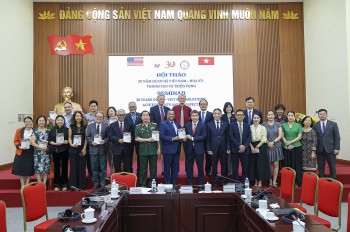 | Vietnam-US Relations: 30 Years of Cooperation and the Path Ahead On October 2 in Hanoi, the Viet Nam Union of Friendship Organizations (VUFO), in cooperation with the US Embassy in Vietnam, held a seminar entitled ... |
 | Vietnam-America Friendship Association: 80 Years of Fostering Understanding and Friendship On October 16 at Ho Guom Opera House (Hanoi), the Viet Nam Union of Friendship Organizations (VUFO) and the Vietnam-USA Society held a ceremony marking ... |
Recommended
 Friendship
Friendship
Vietnam-Cambodia Friendship Association Continues to “Nurture Friendship” for 47 Cambodian Students
 Friendship
Friendship
Tightening Vietnam-Latin America Ties, Deepening Cooperation with Brazil and Guyana
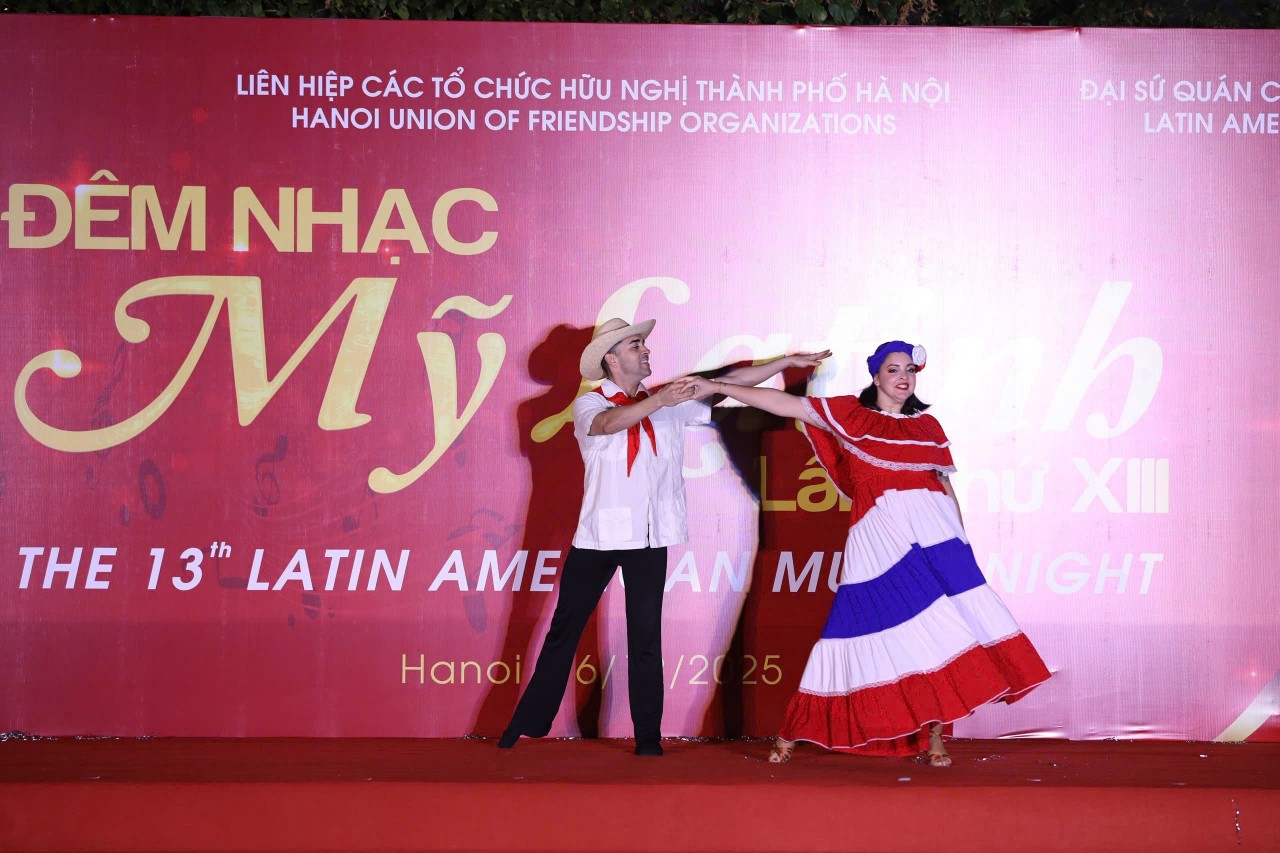 Friendship
Friendship
Hanoi Hosts Vibrant Latin American Cultural Exchange Night
 Friendship
Friendship
Vietnam-Singapore Friendship Association Prioritizes Business Networking and Innovation in 2026
 Friendship
Friendship
Vietnam Ready to Contribute Actively to Efforts to Maintain Regional Peace
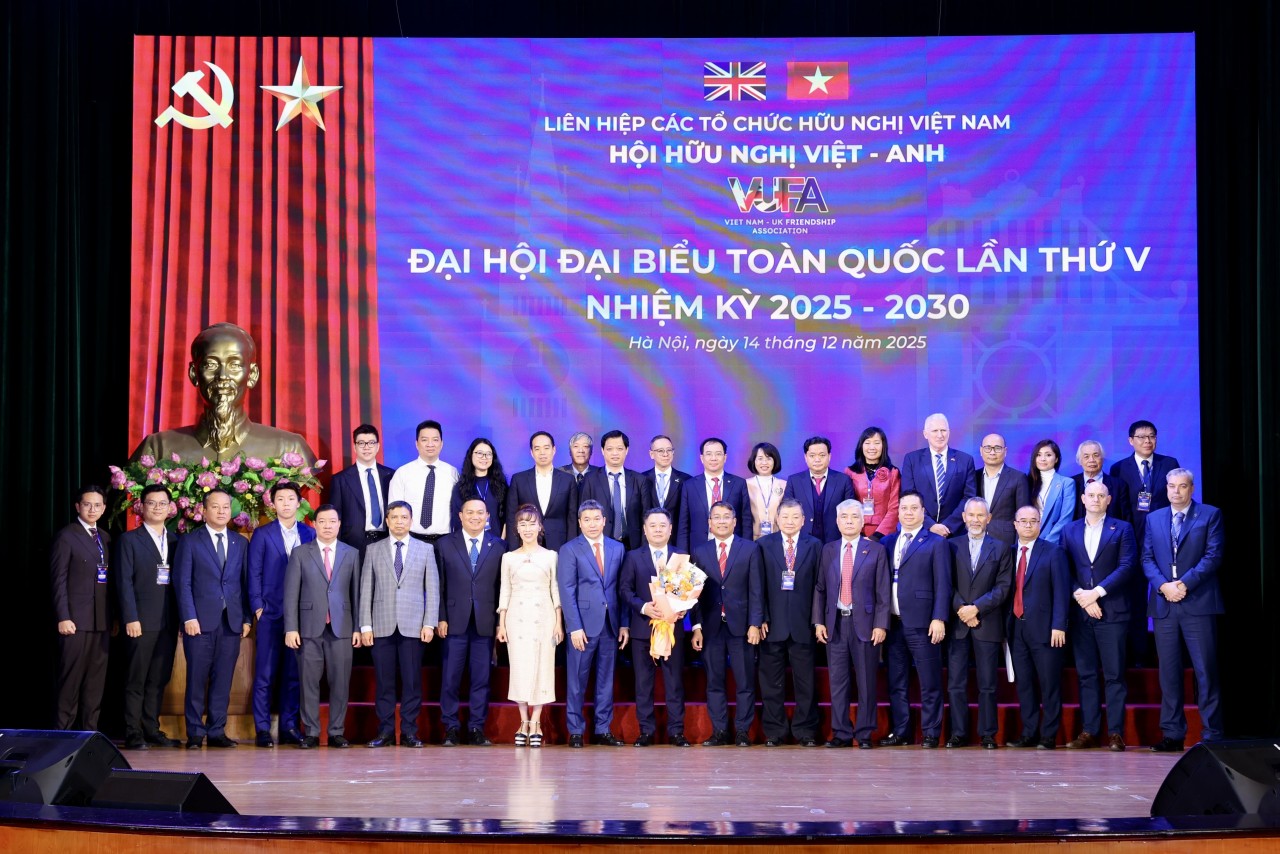 Focus
Focus
Nguyen Ngoc Canh Elected President of Vietnam-UK Friendship Association for 5th Term
 Friendship
Friendship
Vietnam-Japan Friendship Association Enhances Engagement with Partners in Japan
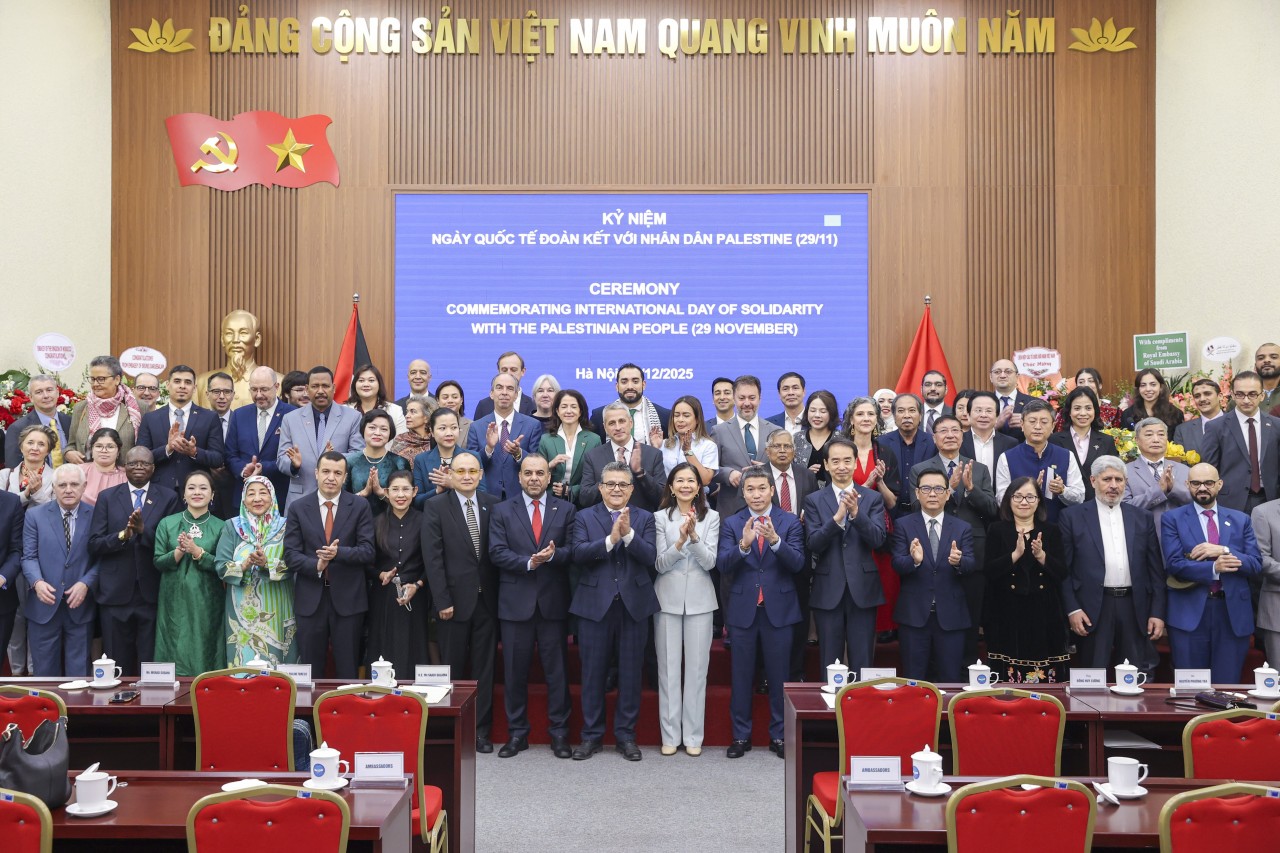 Focus
Focus

